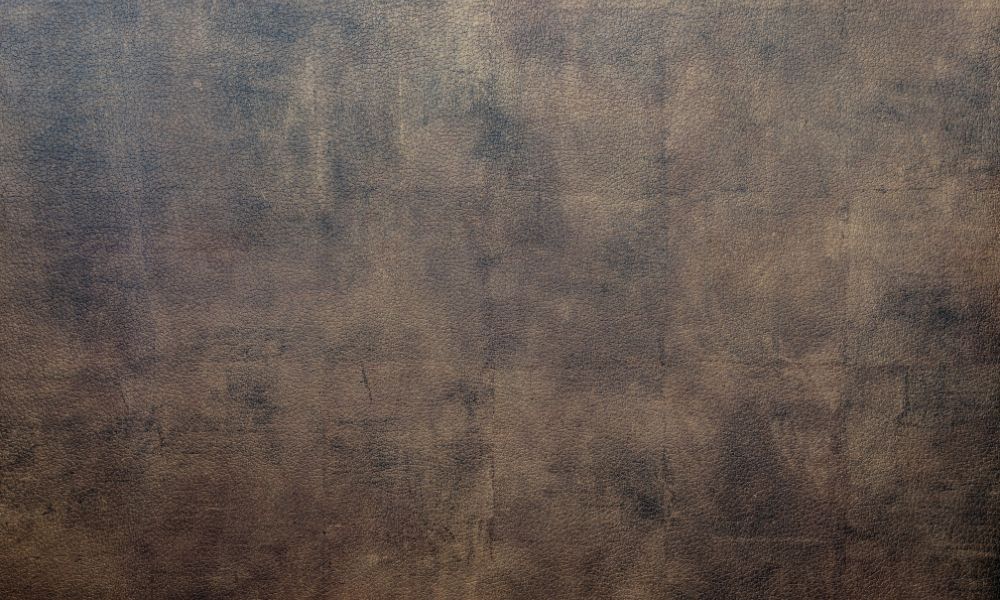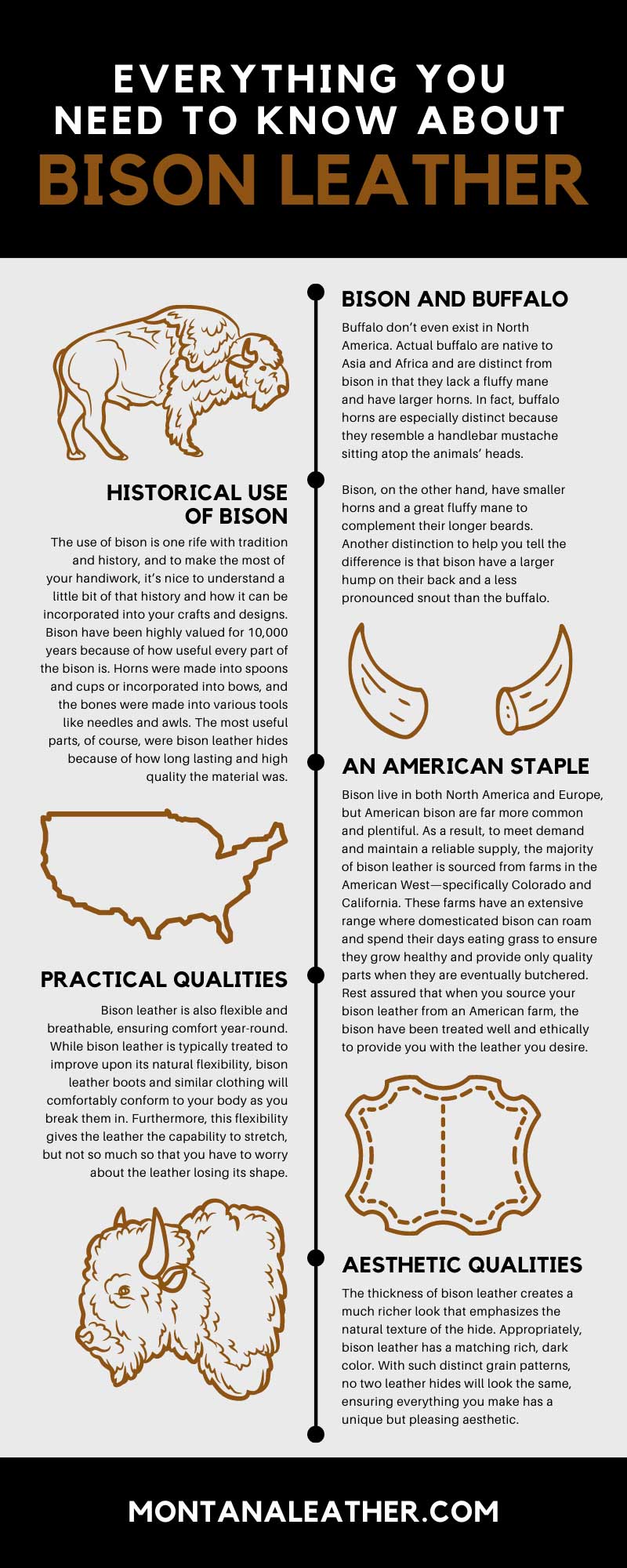
While not exclusive to North America, the bison has long been held in high esteem within the US. That’s due to everything from the traditions of the Native Americans who hunted and valued them to the delicious meat and quality hides they provide us to this very day. Furthermore, while bison are found in Europe, it’s in much fewer numbers than the more common American bison, making them that much more of a specialty among American leatherworkers. If you want to try your hand at crafting bison leather products, here’s everything you need to know about bison leather.
Bison and Buffalo
Before we get into the leather, let’s first talk about bison and buffalo. It’s common for many people to think bison and buffalo are the exact same creature because we use the two terms interchangeably; however, it’s important that you understand that they are different. Despite both belonging to the Bovidae family, bison and buffalo aren’t all that closely related.
For starters, buffalo don’t even exist in North America. Actual buffalo are native to Asia and Africa and are distinct from bison in that they lack a fluffy mane and have larger horns. In fact, buffalo horns are especially distinct because they resemble a handlebar mustache sitting atop the animals’ heads.
Bison, on the other hand, have smaller horns and a great fluffy mane to complement their longer beards. Another distinction to help you tell the difference is that bison have a larger hump on their back and a less pronounced snout than the buffalo.
Historical Use of Bison
The use of bison is one rife with tradition and history, and to make the most of your handiwork, it’s nice to understand a little bit of that history and how it can be incorporated into your crafts and designs. Bison have been highly valued for 10,000 years because of how useful every part of the bison is. Horns were made into spoons and cups or incorporated into bows, and the bones were made into various tools like needles and awls. The most useful parts, of course, were bison leather hides because of how long lasting and high quality the material was.
Bison hides were used for just about everything—moccasins, pouches, tipi coverings, clothing, and even disguises to help hunt more bison. The rugged strength and durability of bison hides made them capable of resisting the elements like no other leather or material of the time.
Today, bison leather is irreplaceable for consumers desiring leather products that are reliable, strong, and guaranteed to last for years to come.
An American Staple
As previously mentioned, bison live in both North America and Europe, but American bison are far more common and plentiful. As a result, to meet demand and maintain a reliable supply, the majority of bison leather is sourced from farms in the American West—specifically Colorado and California. These farms have an extensive range where domesticated bison can roam and spend their days eating grass to ensure they grow healthy and provide only quality parts when they are eventually butchered. Rest assured that when you source your bison leather from an American farm, the bison have been treated well and ethically to provide you with the leather you desire.
If you’re looking for all-American-made products, then bison leather is a guarantee that you’re receiving a product that was raised and made locally. It’s also a good way for leatherworkers to feel confident that they’re purchasing high-quality materials that will help their crafts be unique and more desired.
Practical Qualities
We’ve touched upon the strength of buffalo leather, but what other qualities can it provide your crafts that make it so highly valued?
Part of the leather’s strength comes from how thick the leather is. It’s two to three times thicker than cattle leather, to be more precise, although the leather is usually leveled to weights similar to cow. However, bison is denser than cow, having up to 40% for tensile strength. This allows more usable material to ensure the supply chain remains flush and makes bison leather ideal for constructing belts, bags, and other heavy leather goods.
Bison leather is also flexible and breathable, ensuring comfort year-round. While bison leather is typically treated to improve upon its natural flexibility, bison leather boots and similar clothing will comfortably conform to your body as you break them in. Furthermore, this flexibility gives the leather the capability to stretch, but not so much so that you have to worry about the leather losing its shape.
Like other leathers, bison leather only gets better with age. As the leather becomes worn and older, it will become softer, more flexible, and develop a pleasing patina that improves the look of the leather. When you buy bison leather, you’re ensuring you’ll enjoy it for years to come.
Aesthetic Qualities
As you’ll quickly learn, different kinds of leather can provide very different appearances. Bison leather provides a deep and varied grain pattern that is valued for being highly pleasing. The thickness of bison leather creates a much richer look that emphasizes the natural texture of the hide. Appropriately, bison leather has a matching rich, dark color. With such distinct grain patterns, no two leather hides will look the same, ensuring everything you make has a unique but pleasing aesthetic.
As mentioned, a patina will form as the leather ages. Patina refers to the soft, darkening sheen leather develops as it endures wear and tear, sunlight, natural body oils, and more while undergoing a process called oxidization. A good patina will only ever enhance the leather’s appearance, and bison leather is well known for creating a superb patina.
For high-quality bison leather hides, you can always depend on Montana Leather Company. Founded in 1908, we’re experts in our craft and have long been the preeminent supplier of various leather materials, including bison. Should you ever have questions about the bison leather we carry, our professionals will be happy to share everything you need to know about bison leather to ensure you’re confident in your purchase. Contact us today for the materials and tools you need to kick-start your passion for leatherworking!


